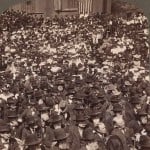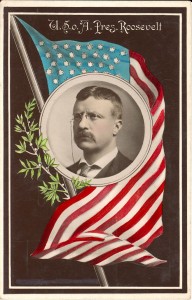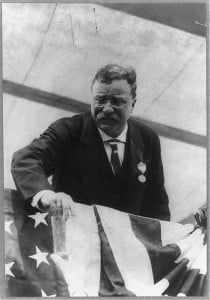Teddy Roosevelt amid flags
By James Breig

This year could be called the eye of a hurricane of war anniversaries. Americans are in the middle of marking the 200th anniversary of the War of 1812, the sesquicentennial of the Civil War and the 70th anniversary of World War II.

This is also the 115th anniversary of one of the USA’s shortest conflicts: The Spanish-American War. Ignited in April 1898, the war ended in August. Despite that brevity, the hostilities ranged from Cuba in the Atlantic to the Philippines in the Pacific. They also cemented the reputation of Theodore Roosevelt as a man of action.
When he returned from leading his legendary Rough Riders in the assault on San Juan Hill in Cuba, TR began a whirlwind rise: He was immediately elected governor of New York, became vice president just two years later and, with the assassination of President McKinley in 1901, entered the White House.

During his stop-over 110 years ago, Roosevelt also reviewed thousands of children, each of whom held a flag. Then he rushed off to give another speech in Joliet, where he was driven along a “route profusely decorated with flags.”
(Next week: A remarkable flag journey connected to Teddy Roosevelt.)
